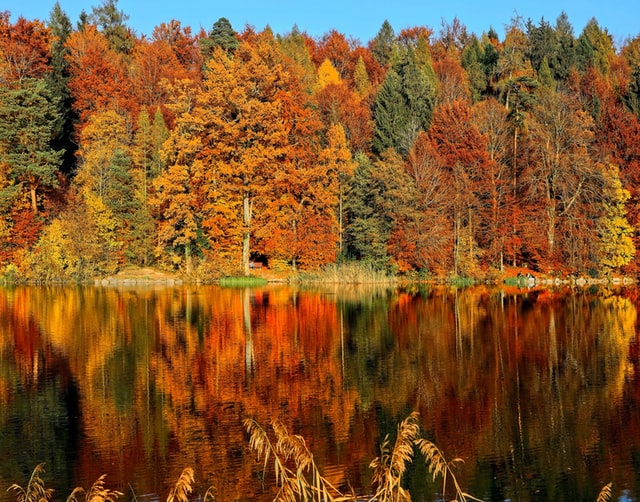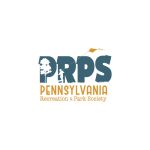Reprioritizing Fall Maintenance Efforts

The Pennsylvania Park Maintenance Institute advocates the identification of managed landscapes and other green space as critical infrastructure to human health and happiness, and promotes good environmental stewardship of those spaces. As a result of the pandemic, communities are rediscovering the importance of connecting to the outdoors, and park utilization has increased dramatically. With uncertainty of financial resources, efficiencies in maintenance efforts have never been more vital for the longevity of our capital investments in parks. The following suggestions are intended to provide strategic guidance as park superintendents, property managers, and ground crews schedule tasks for the next few months.
Inspect equipment and assess your needs for next season. Clean, inspect, and maintain your mowers, trimmers, leaf blowers, hand tools, vehicles and heavy equipment. Get out attachments needed for fall like aerators or mulching attachments. Inspect and prepare your snow removal equipment like plows, buckets, snow blowers, and shovels, because winter is just around the corner. Take any equipment that needs it to an authorized service representative before the next rush. Preventative maintenance while the weather is favorable will reduce potential hazards from reactive repair in the field while snow is flying.
Keep your fields healthy by aerating. Aeration minimizes soil compaction from heavy use and helps to prevent thatch, a thick layer of roots, stems, and debris that blocks water, oxygen and nutrients from reaching the soil. Deprived of their basic needs by compacted soil, grasses struggle in stressful situations, such as heat and low rainfall, and lose their healthy, rich color. Grasses gradually thin and eventually die out completely, for lack of the oxygen, water and nutrients available just inches away. Aeration encourages roots to grow deeper, encourages greener, thicker turf, and reduces runoff because fields are able to absorb more water.
Continue to mow throughout the fall season. Even though daylight continues to get shorter over the next few months, grass will continue to grow. It is important to continue mowing until the first hard frost. Research the just-right height for your turf based upon species, typically between 2-3 inches, to keep the grass healthy when it turns cold. Maintaining grass height before winter can minimize diseases, like snow mold, that occur when grass is too long over the winter. Additionally, longer grass during winter may encourage vole activity.
Identify which trees or bushes need pruning. While thinning and reduction pruning is not recommended in the fall, it is an opportune time to remove any dead or damaged limbs. Be aware of low-hanging branches that might snap or break under the weight of snow in the winter and cause damage to trees and shrubs. Additionally, Thanksgiving through New Year’s Day is a good timing window to remove suckers, trim any perennials with disease issues, cut back plants prone to slugs like hosta, delphinium, or lupine, and prune shrub roses. Be sure to connect with a certified professional to avoid damaging plants, if you do not have someone with expertise on staff.
Reconsider how to manage leaves. With tighter budgets, it is time to reconsider where to cut costs. When you rake or blow and remove leaves, it costs you more than some of the alternative methods. Mulching leaves and leaving them on the grass, rather than raking and bagging them, is good for the turf and the environment. As shredded leaves decompose, they feed grass naturally. Shredded leaves also make for excellent mulch in flower beds, or could be used to make rich compost for community gardens. However, too much of a good thing can be bad. A layer of leaves one-fourth to three-eighths inch thick can do some serious damage to your turf. Wet or frozen leaves basically will form a mat over your lawn when the snow comes down. This blocks out the sun, suffocates your lawn, and could increase the chance for fungal diseases.
Although park facilities are the most visible resource our industry provides, essential maintenance services are often taken for granted -- not only by residents, but also by the organizations that are responsible for development and stewardship. Ground breakings and ribbon cuttings provide great publicity events, however daily maintenance efforts are the tasks required to provide safe and inclusive space, and offer healthy environments where people can develop a sense of community, identity, and belonging. The Pennsylvania Park Maintenance Institute provides all the resources you need streamline your operations – all in one place.
Brian “BK” Koehler is the director of the Pennsylvania Park Maintenance Institute. BK holds degrees in educational theory and production experience in corporate training and development. He can be reached on LinkedIn at https://www.linkedin.com/in/koehlerbrian/ or emailed at bk@prps.org – www.prps.org/maintenanceinstitute

